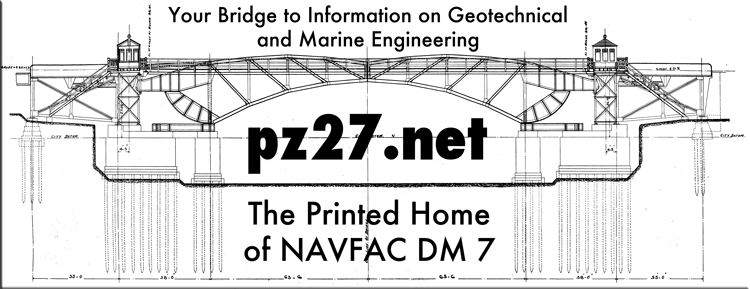One of the things that was attempted in the TAMWAVE project is the use of cavity expansion theory to estimate soil set-up in cohesive soils. Doing this, however, brought some complications that need some explanation.
Cavity expansion theory is basically the study of what happens when one body expands inside of another. When this takes places, additional radial stresses (most analyses center around a cylinder or sphere) are generated. In the case of driven piles, these additional stresses add to the pile’s resistance to load. It can be argued that cavity expansion is one of the key advantages of driven piles. In the case of drilled piles such as drilled shafts or auger-cast piles, this does not take place, as the soil is removed either before or during the actual pile installation. The result of this is that driven piles, for the same length and diameter as a corresponding drilled pile, a driven pile will have a greater resistance to load (ultimate capacity.)
Applying cavity expansion theory to piles has a long history and is detailed in documents such as Randolph, Carter and Wroth (1979) and Yu and Houlsby (1991). Our particular interest is with clays because, in addition to the changes in the soil from cavity expansion, the pore water pressure increases. This is the primary (but not the only) reason why the SRD (soil resistance to driving) in cohesive soils is significantly less than the ultimate capacity; this fact inevitably complicates drivability studies.
The increase in pore water pressure is a dynamic phenomenon; it experiences a sudden increase during driving and then gradually dissipates after installation. How gradually the latter takes place depends on many factors such as the permeability of the soil. Study of this phenomenon is well represented in the literature; however, for the TAMWAVE project it is not really of interest. The primary interest here is the value of SRD after the immediate increase of pore water pressures during driving.
Both cavity expansion theory and practice show that excess pore water pressures can easily exceed the effective stresses. In principle, considering that we have established the beta (effective-stress dependent) method for both cohesionless and cohesive soils, this can mean a complete loss of SRD. Although dramatic drops in SRD are not unknown, for most piles this is unrealistic. The reason for this is that, like the dissipation, the build-up of pore water pressures is a dynamic phenomenon, albeit in a much smaller time frame. Dissipation, hindered as it is by the low permeability of cohesive soils, begins immediately. Pore water pressures (along with any other stresses induced by cavity expansion) also vary with the distance from the pile.
The result of all this is that prediction of both the increase of pore water pressure and its effect on the SRD of the pile during driving is a complicated phenomenon that is not completely represented by closed-form cavity expansion based solutions. For a project such as this, what we need is something that will give a reasonable representation of soil set-up for cohesive soils. To accomplish this, we stick with computing the excess pore water pressure, but with a different methodology. We assume the following:
- The basic validity of our effective-stress based beta methods of shaft friction calculation.
- All of the decrease from static ultimate capacity to SRD takes place due to pore water pressure increase.
- The excess pore water pressure increases affect the effective stress used to compute the shaft friction.
- Only those pile segments under the water table are subject to this analysis.
Assuming all that, for a soil set-up factor (from this source, loosely adapted) , the excess pore water pressures that affect the effective stress (which in turn determine the shaft friction) are computed by the equation
This gives identical results to those when the are applied directly.
In practice this phenomenon is still subject to investigation. Some of the research involves use of numerical methods (such as finite element methods) to simulate cavity expansion effects. This is doubtless an advance over the closed-form solutions of the past, and a necessity given the complexity of the physics of the problem. Empirical methods are also still being developed, such as are documented by Wang, Verma and Steward (2009).


Where I can read more about cavity expansion. My aim is to understand the concept and behavior of cavity expansion. I’d appreciate any recommendation.
LikeLike
I have not seen a really good treatment on the subject for geotechnical purposes. Vesic used it extensively in his pile capacity methods.
LikeLike